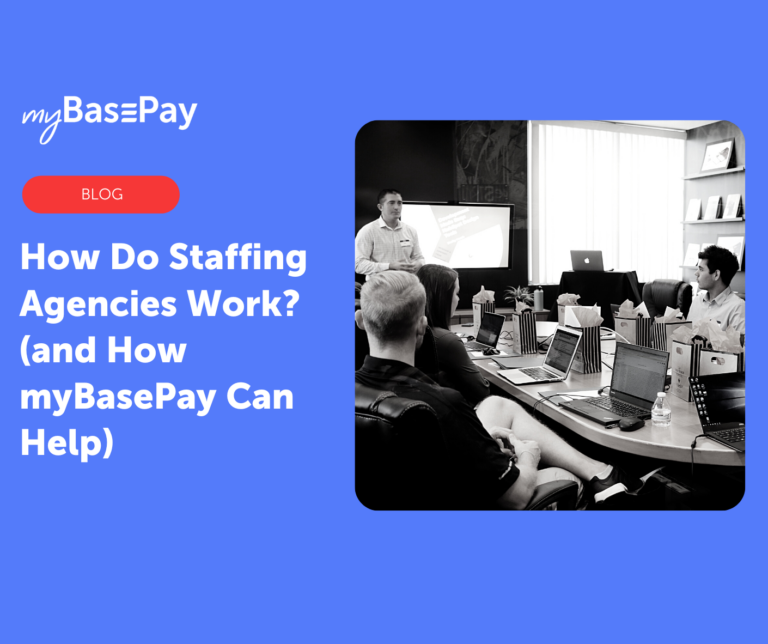How to Manage (and Reinvest) Funds to Improve Your Staffing Firm
One of the biggest challenges any staffing firm faces is properly managing its funds. The staffing industry is incredibly competitive, and when you throw in common challenges like compliance and strict vendor requirements, it is all too easy to see how scaling efforts — or even maintaining the status quo — can feel nearly impossible.
No matter what the size of your staffing agency, however, learning to properly manage and reinvest your funds can help you achieve sustainable growth that leads to long-term success. When you manage your funds appropriately, you can do more than just keep your finances in the black. You can actively improve your agency and its results.
Why You Must Know Your Bill and Burden Rates
Two of the most important metrics for any staffing agency owner to understand are their bill rate and burden rate. The bill rate is simple: it is the amount of money a staffing agency charges its clients per hour or per project when it supplies them with a temporary employee. This would be the amount of money that you invoice your clients for.
The burden rate accounts for the indirect costs associated with employing individuals at your staffing agency. This is more than just the pay rate that you offer those who work through your agency. Other factors that can go into the burden rate include taxes, health insurance, employee training, sick leave and paid vacations.
Of course, the burden rate can vary dramatically between a full-time employee and a contingent worker, as employers do not need to pay for payroll taxes, health insurance or other common expenses when they use contingent talent. However, even a contingent employee will likely yield additional costs of employment beyond their paycheck, such as a staffing agency needing to run a background check.
The burden rate can even differ based on legal requirements of different states or cities. Businesses must accurately calculate the burden rate for each worker to set appropriate rates for projects.
Taking Steps to Reduce Overhead
In addition to the burden rate associated with each worker your staffing agency provides to its clients, you incur expenses from a variety of non-revenue producing tasks. Areas such as HR, recruiting and compliance have become increasingly complex, requiring more time and attention than ever.
In the midst of the Great Resignation, competition has also increased to acquire top talent, with job openings far outpacing the number of unemployed. Surprisingly, data from Staffing Industry Analysts reveals that the contingent workforce actually shrank in 2020, putting further pressure on staffing agencies.
To alleviate this, a key funding management principle is to outsource as many non-revenue producing tasks as possible. This tends to be much more cost-effective than hiring full-time employees to manage such tasks, while also freeing up agency leaders to focus on business growth activities.
Notably, a HubSpot report on how staffing firms are achieving double-digit growth finds that “owners of successful firms are very involved with the sales and business development efforts — aka, the things that really drive their business, client satisfaction, and growth. They outsource or delegate the rest.”
Outsourcing reduces overhead and helps the agency be more lean in its operations to drive profitability.
Talent Is the Ultimate Reinvestment Strategy
When your day-to-day management of your staffing firm improves, it’s only natural that you’ll have more money “left over” in profits. But high-growth staffing firms don’t pocket the savings.
Instead, they actively invest much of this money back into their talent.
As an Oxford Economics global survey of 2,700 executives reveals, “Companies with above-average revenue growth are more likely than their peers to provide employees with advanced training and development programs, and to give their workers access to the information they need to do their jobs.”
On the opposite end of the spectrum, 52 percent of “underperformers” struggle to even recruit talent with base-level skills. This is especially important when it comes to helping your agency’s recruiters and staffing curators succeed. Additional training can improve their ability to match the right talent to the right client based on factors like required skill set, business culture and more.
Talent development initiatives can help recruiters be better equipped at utilizing online talent marketplaces and finding diverse talent. Training can improve their ability to truly understand the needs of both your agency’s clients and the temporary workers you use to fill staffing needs.
Reinvesting in your talent doesn’t just improve their capabilities and productivity. It also has a direct influence on how they view their job. Professional training and development has been found to increase job satisfaction.
Employees who are satisfied and engaged with their work are less likely to struggle with issues like high absenteeism. They become more optimistic and team-oriented, bringing a solution-oriented approach to problem solving that elevates the entire organization and makes you better able to promote your agency’s unique benefits.
Even more importantly, these engaged and satisfied employees are more likely to stick with your organization for the long haul. You’ll enjoy continually increasing productivity (and the profits to go along with it), while avoiding the expenses associated with a high turnover rate.
Get the Help You Need
Staffing agency owners have a wide range of tasks and responsibilities that they need to manage. More often than not, these responsibilities have a direct impact on the bottom line. By improving the efficiency of your operations and finding ways to cut costs, you can increase your margins so that you have more money to reinvest in the agency.
myBasePay can help.
With a full-suite of back-office solutions, you can better manage expenses in this area by outsourcing to experts, rather than needing to hire additional full-time staff. End-to-end funding and compliance administration further reduce many of the risks associated with the ever-changing staffing world, helping to make expenses more manageable and predictable.
With dependable assistance for many of your agency’s most crucial tasks, you can better manage your finances and be better poised to reinvest in what matters most: talent.
Author: Cesar Jimenez, myBasePay CEO
Cesar A. Jimenez is an entrepreneur, investor, and military veteran with over 25 years of staffing industry expertise successfully leading technology staffing organizations. His expertise in the IT industry allows him to use his experience as a thought leader for talent acquisition, staffing, IT, and recruitment technologies with a passion for contingent workforce solutions. Cesar has held various leadership roles for both a global staffing organization and technology solutions companies. This expertise has enabled him to develop alternative workforce models that provide the agility for organizations to be competitive in today’s marketplace. In his spare time, he enjoys spending time with hisfamily, working out, and coaching high school baseball players.






